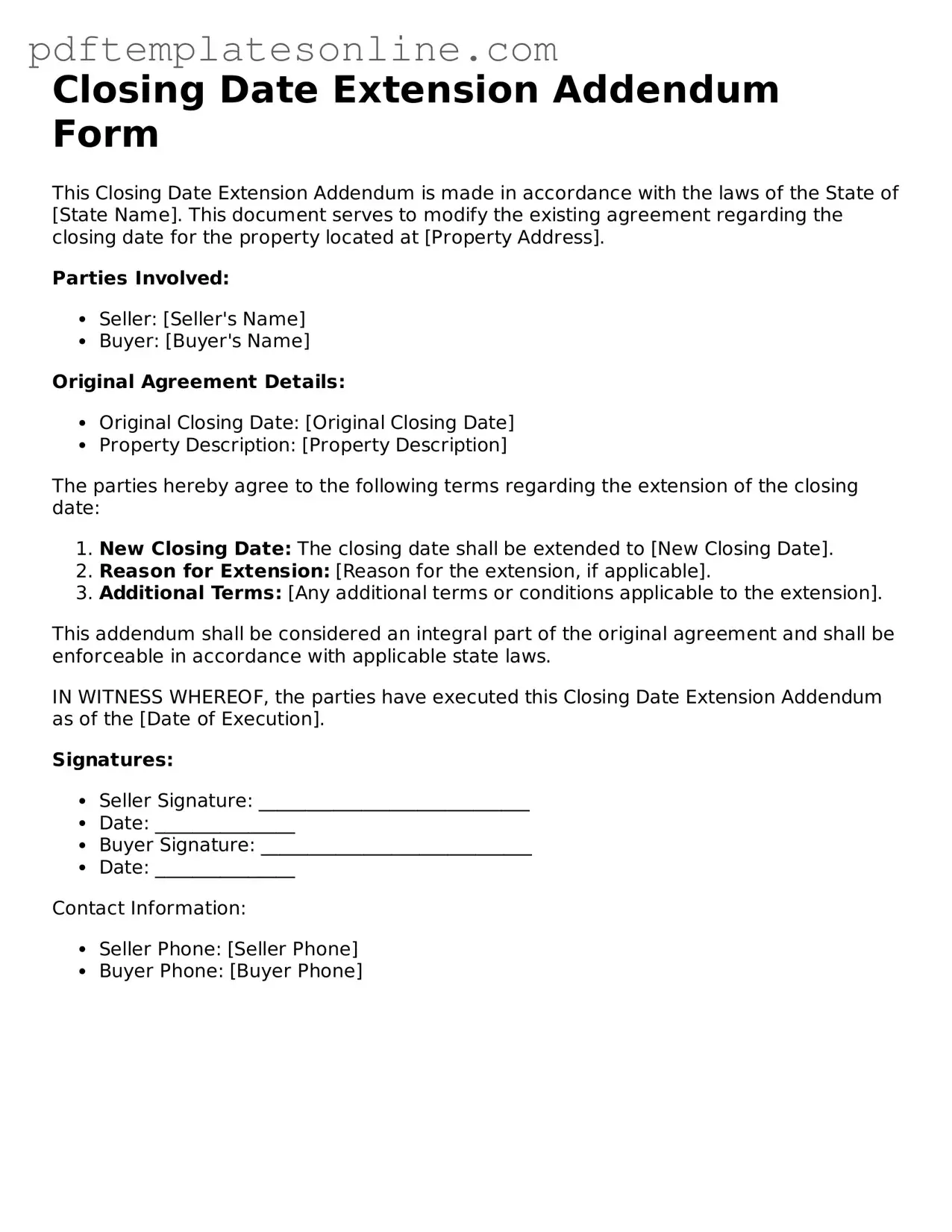Filling out the Closing Date Extension Addendum Form can be a straightforward process, but several common mistakes can lead to complications. One frequent error is failing to include the necessary details about the original closing date. Without this information, it can be challenging to determine the context of the extension, which may cause confusion for all parties involved.
Another common mistake is neglecting to specify the new closing date. It is essential to clearly state the new date to ensure that everyone is on the same page. Without a defined new closing date, misunderstandings may arise, leading to delays or disputes.
People often overlook the importance of obtaining signatures from all parties involved. A valid addendum requires the consent of everyone affected by the change in the closing date. If one party does not sign, the extension may not be enforceable, which can create legal complications later on.
Additionally, some individuals may forget to date the addendum. The date is crucial as it establishes when the agreement to extend the closing date was made. Without a date, it may be difficult to ascertain the timeline of events, which can complicate matters if disputes arise.
Lastly, a lack of clarity in the language used can lead to misinterpretations. It is vital to use straightforward language and avoid vague terms. Clear communication helps ensure that all parties understand the terms of the extension, minimizing the risk of future disagreements.
